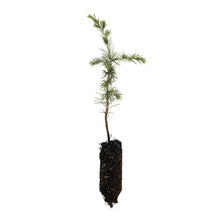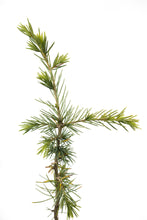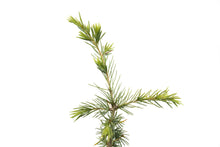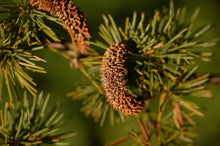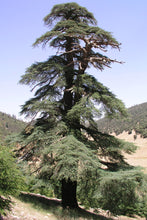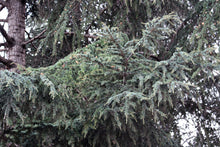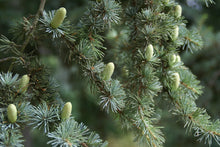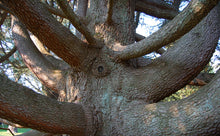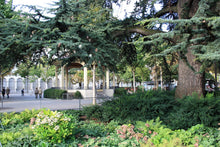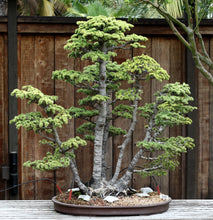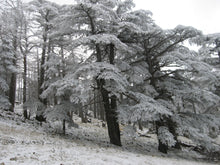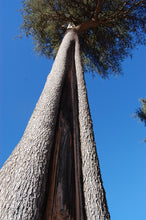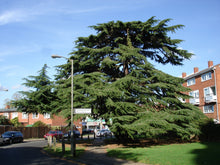
Cedrus atlantica
-
An extremely popular ornamental evergreen native to the Atlas Mountains of Morocco
- 100% guaranteed
- Seed-grown on California's Redwood Coast
- Transplanting and care instructions included
 |
Moisture Low / Medium |
 |
Cold Hardiness 0°F |
 |
Light Full Sun / Partial Shade |
 |
Size 45 – 65' tall / 35 – 50' spread |
 |
Lifespan 150 yrs |
 |
Growth Rate Medium |
 |
Drought Tolerance High |
 |
Wind Resistance Medium |
About Atlas Cedar
From the U.S. Forest Service:
"Cedrus atlantica is a large tree attaining a height at maturity of 9 to 40 m (29.5 to 131 ft), with rapid growth when young, and is closely related to C. Zibani. The Atlas cedar is distinguished by a taller crown, less densely arranged branchlets, bluish green leaves (needles) that vary from light green to silvery blue, smaller cones 5 to 8 cm in length by 3 to 5 cm in width (2 to 3 in. by 1 to 2 in.), and smaller seeds. Young trees appear stiff, with an erect leader and an overall pyramidal shape, but with maturity this species assumes a flat-topped habit with horizontally spreading branches. Cedrus atlantica is hardy in U.S. zones 6 to 9.
Cedrus atlantica was introduced into cultivation around 1840. A fast-growing species, the Atlas cedar prefers a sunny (or partial shade) location in a well-drained, moist, deep, loamy soil. It will tolerate sandy, clay soils if there is no standing moisture. Atlas cedar prefers an acid soil but withstands alkaline conditions. It grows well in the heat of the south and tolerates pollution and urban conditions better than C . Zibani or C. deodara. Cedrus atlantica should be planted in areas sheltered from strong, sweeping winds. It will suffer considerable needle burn and injury during cold winters when sited in windy locations."
About Jonsteen's Seedlings
All of our trees are seed-grown at our nursery on California's Redwood Coast, which is inspected monthly and licensed by the California Department of Agriculture. Trees can provide a natural barrier against high winds, temperatures, noise pollution and soil erosion, all while benefiting local air quality, wildlife and property values — a Jonsteen seedling will only grow in value and beauty!
About Jonsteen's 100% Guarantee
All of our trees are guaranteed to arrive healthy and in good condition. If your tree perishes despite your honest efforts, we will be happy to replace it with a small-sized seedling for just the cost of shipping/handling. You can learn more about our guarantee and tree replacement policy here.
Seedling Size Chart: Medium
Due to the dynamic nature of actively growing trees, as well as the tremendous variation between species’ growth rates, we rely on the cubic volume of a seedling’s root mass to determine its “size” (Small / Medium / Large / XL). Within each size there is minor variance — the dimensions provided here represent the category minimum. If exact measurements are essential, please contact us about current stock.
















